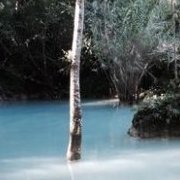Thailand's Most Polluted Air Is In The North
-
Recently Browsing 0 members
- No registered users viewing this page.
-
Topics
-
-
Popular Contributors
-
-
Latest posts...
-
107
Will the Epstein saga tear MAGA apart?
Rather like the teenage girls in the beauty pageant dressing rooms he "just happened to wander into"! Let's face it, the fellow is an Ephebophile, who is very nervous that the extent of his enthusiasms is about to become revealed. Put more crudely, he is a "nonce" who is <deleted>ting bricks 'cos he is about to be found out! -
87
Kissing on the mouth
Malcolm B admitting an American is a good guy. Brings a tear to my eye -
6,640
-
87
Report Race Against Time: Bangkok May Be Below Sea Level by 2030
It might be 798 years, not exact -
354
UK Mohammed Fahir Amaaz & Muhammad Amaad on Trial over Manchester Airport Clash
Seriously? "A man punching police officers"? Not sure why you're playing it down so much. Two men beat the crap out of several police officers at a major airport (heightened security risks etc.). All caught on video. This is one of the most talked about and eagerly awaited trials in recent history! Why should we need to use the search function on BBC website to find it? -
132
Pattaya Condos: History and Future
Perhaps you can explain how foreign condo owners actually own the land their condo block sits on?
-
-
Popular in The Pub





.thumb.jpeg.d2d19a66404642fd9ff62d6262fd153e.jpeg)





Recommended Posts
Create an account or sign in to comment
You need to be a member in order to leave a comment
Create an account
Sign up for a new account in our community. It's easy!
Register a new accountSign in
Already have an account? Sign in here.
Sign In Now